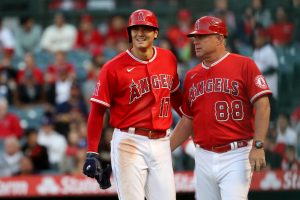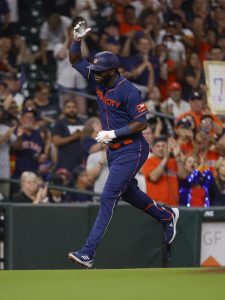12:30pm: Wynns is indeed being selected to the 40-man roster, MLBTR has learned.
11:40am: The Giants announced Wednesday that they’ve optioned catcher Joey Bart to Triple-A Sacramento. They’ve also acquired catcher Austin Wynns from the Phillies organization in exchange for lefty Michael Plassmeyer and cash, according to announcements from both teams.
Wynns wasn’t on the Phillies’ 40-man roster, and the Giants have yet to indicate that he’ll be selected to their own 40-man. Curt Casali is now the only catcher on San Francisco’s big league roster, so they’ll either need to make a move to formally select Wynns’ contract or else call up another catcher from their minor league system. Michael Papierski is the only other catcher on the Giants’ 40-man roster.
The decision to option Bart comes on the heels of some prolonged offensive struggles for the former No. 2 overall draft pick. The now-25-year-old Bart had a fast start to the season, going 6-for-18 with a pair of homers and four walks through his first six games, but he’s fallen into a dreadful slump. Over his past 30 games (24 of them starts), Bart is hitting just .111/.256/.194 with a staggering 45.3% strikeout rate.
Given the magnitude of those struggles, it’s not a huge surprise to see Bart sent down. The Giants will hope that a return trip to Sacramento can prove to be the catalyst for a turnaround. Bart has long ranked not only as one of the Giants’ best prospects but as one of the very best prospects in all of baseball, and president of baseball operations Farhan Zaidi has been quick to voice confidence in Bart’s long-term outlook. Zaidi tells Susan Slusser of the San Francisco Chronicle (Twitter link) that the Giants “still think Joey is an everyday catcher” but felt it prudent to give him “a little bit of a reset” following such a difficult stretch at the plate.
Bart entered the season with 112 days of Major League service time, meaning he needed another 60 days on the active roster or big league injured list to reach one full year of service and remain on his same arbitration (post-2024) and free agency (post-2027). He’s already accrued 62 days, so even if he were to stick in the minors for the remainder of the season, he’s still logged enough time to cross into that one-plus service bracket.
As for the 31-year-old Wynns, he’ll give the Giants an experienced backup option. Wynns, the Orioles’ 10th-round pick back in 2013, spent parts of three seasons in the big leagues with the O’s, batting a combined .216/.255/.326 in 331 plate appearances. He’s thrown out 32% of attempted base thieves in his big league career, and while his pitch-framing marks are below average, he’s been solid in terms of blocking balls in the dirt, per Baseball Prospectus.
Wynns inked a minor league contract with the Phillies over the winter and opened the season with their Triple-A affiliate in Lehigh Valley. Despite his lackluster big league numbers and a pedestrian Triple-A track record, he’s been one of the best hitters in the Triple-A International League so far, hitting at a ridiculous .365/.504/.500 clip. Wynns has hit three homers, five doubles and drawn a walk in just under 21% of his 134 plate appearances thus far. It’s not a huge sample of playing time, but it’s hard not to be impressed by any player reaching base at greater than a 50% clip in a span of 33 games.
Wynns obviously can’t be expected to sustain that pace, but there’s little else he can do to earn himself a big league promotion. That probably wasn’t going to happen in Philadelphia, where J.T. Realmuto is entrenched as the main catcher, but Wynns has a more clear path to playing time with the Giants, even if Casali is likely to function as the starter moving forward.
In exchange for Wynns, the Phillies will pick up the 25-year-old Plassmeyer — a 2018 fourth-rounder (Mariners) who went to the Rays as part of the Mike Zunino trade and has since gone to the Giants in return for righty Matt Wisler. Plassmeyer opened the 2022 season with the Giants’ Triple-A affiliate and has been hit hard, logging a 7.38 ERA in through 46 1/3 innings. He’s been extremely homer-prone this year in that hitter-friendly setting (2.91 HR/9) and has quite uncharacteristically walked 11.3% of his opponents.
Prior to the 2022 season, Plassmeyer looked the part of an upper-minors strike thrower who could be on the cusp of a look in the big leagues. Kevin Goldstein and Eric Longenhagen of FanGraphs listed him near the back of their Top 39 prospects in the Giants’ system this winter, noting that the 6’2″ southpaw has an average changeup and breaking ball to go along with outstanding command. The lack of a true plus offering and a pedestrian 89-91 mph fastball give Plassmeyer a back-of-the-rotation outlook, but if the Phils can get his once-plus command back on track, he could be a depth option in the near future.




